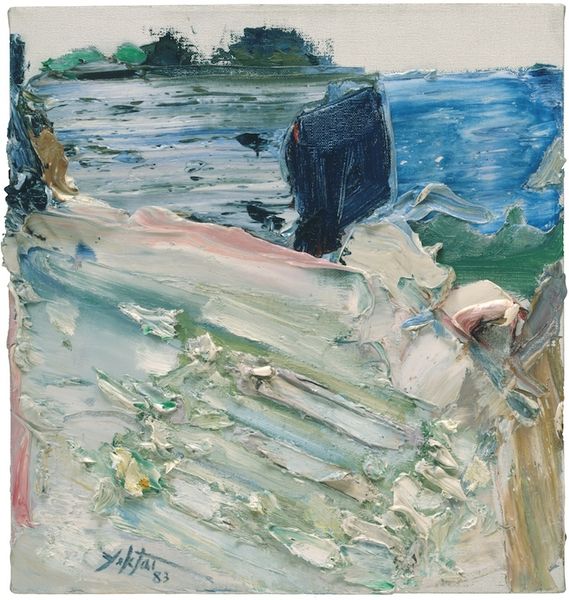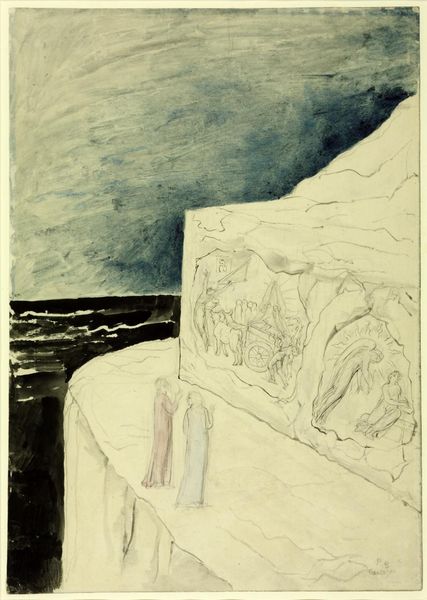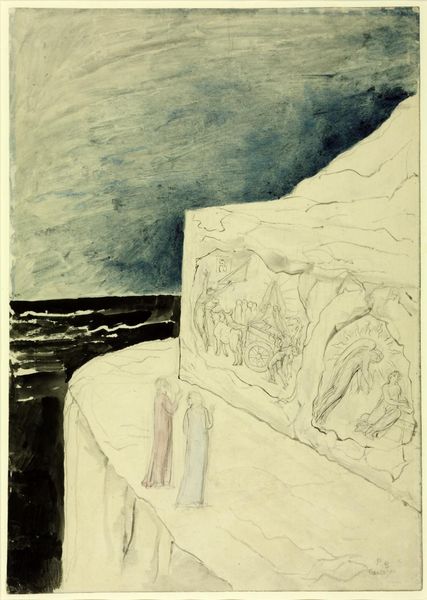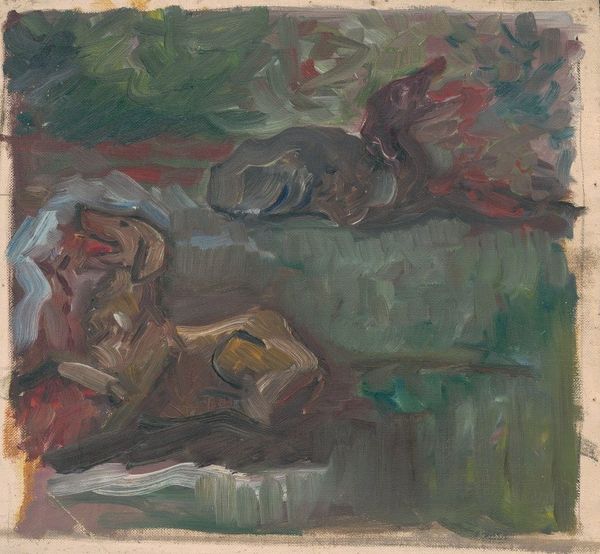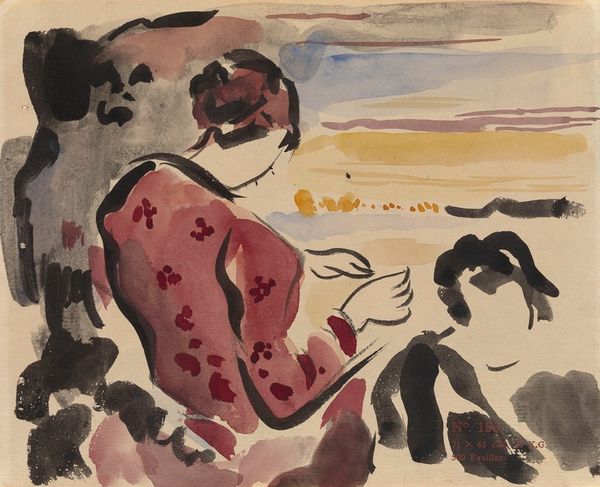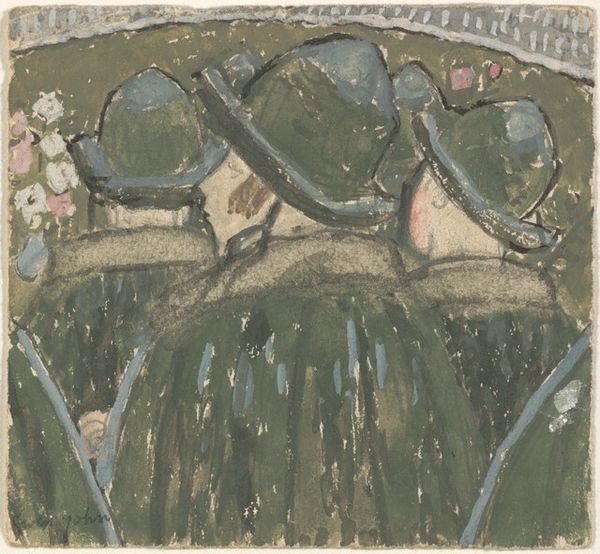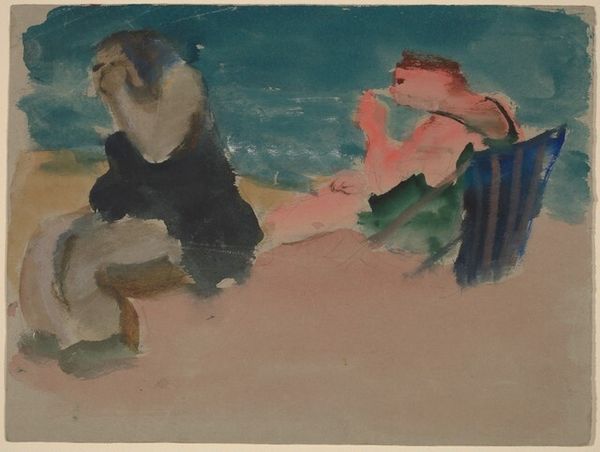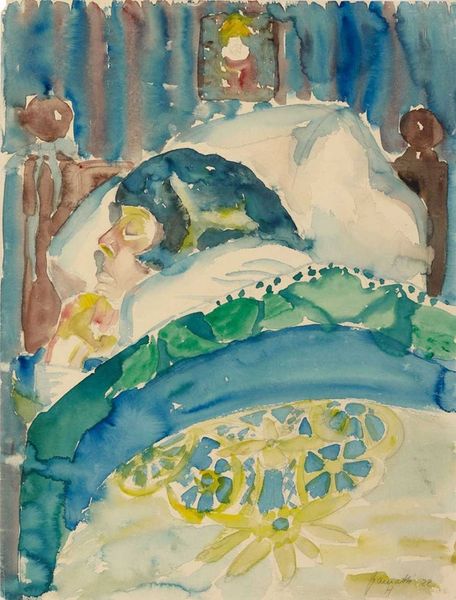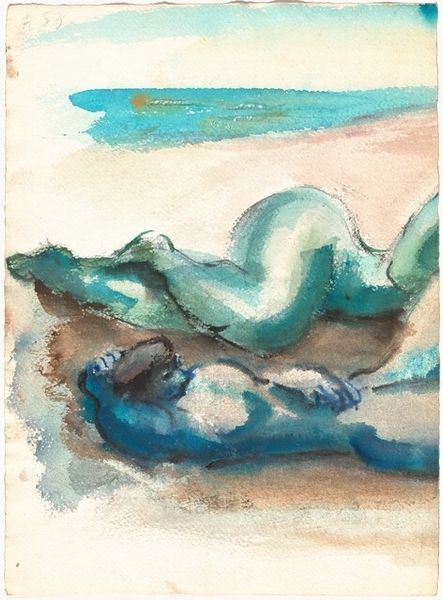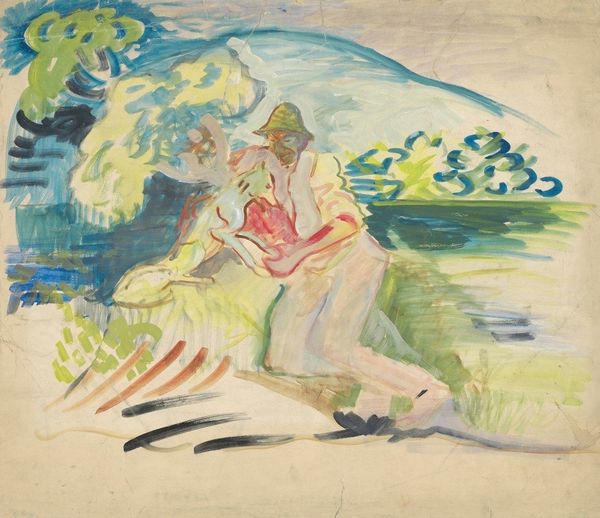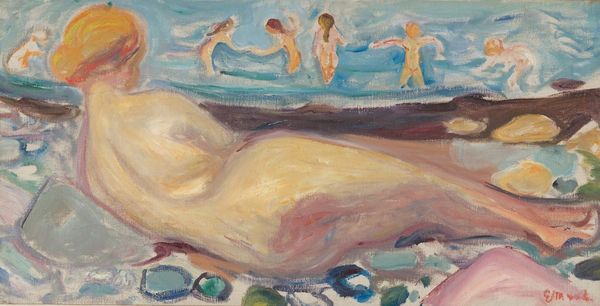
Copyright: Public domain US
Curator: Henri Matisse's "Large Cliff with Fish," created circa 1920, is a captivating landscape rendered in oil paint. The composition presents a dramatic cliff face dominating the left side, juxtaposed against a calmer seascape and, most notably, a collection of fish and eggs in the foreground. Editor: My first impression is of the odd tension between beauty and decay. The seaside view is so lovely, but the pile of fish... it’s a little unsettling, isn't it? They sit there on the gravel and dirt like some natural sacrifice on this beach, even. Curator: Indeed, that dissonance is rather powerful. As a prominent figure in Fauvism and later modernism, Matisse's stylistic evolution is important to consider here. It feels like more than just capturing a scene, it also appears that he sought a more basic expression through this very candid picture of decay and natural resource. Editor: Looking closer, I notice how Matisse uses symbols that carry a lot of weight across different cultures. The sea is almost always associated with the source of life, but death as a sacrifice can invoke purification and new beginnings through rebirth and decay. Do you think the eggs might be symbolizing life amongst this pile of dead sea animals? Curator: Absolutely, and Matisse, ever the artful subverter, might be commenting on that exact idea in early 20th-century Europe as well, as many had lost their lives to WW1 during that time. His landscapes during this time period are full of imagery that juxtapose and explore his sentiments surrounding this massive loss. His decision to place these symbols into such a public genre may also imply his role in the culture shift. Editor: So the fish, the cliff, the sea, even the unassuming eggs—they become visual shorthands for deeper narratives, for a world grappling with itself! How striking. It goes to show the depth of looking beyond just the beautiful surface of Matisse’s famous color schemes. Curator: I completely agree, this oil painting presents us with an experience, but also asks us to inspect not just the immediate composition and colors, but the historical setting to help understand these symbolisms, and its social effect on the broader population. The image serves as both a visual record, and a critical reflection. Editor: Precisely. Thanks to the work’s open yet concise structure, the viewers get a rare chance to analyze art and discover elements that influence a culture's growth!
Comments
No comments
Be the first to comment and join the conversation on the ultimate creative platform.

